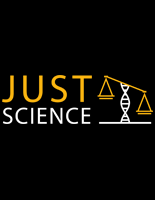Forensic sciences
Cannabinoid Conundrums Webinar Series Expert Panel
Event Dates
–
Eastern
Location
Online
Event Type
Webinar
Registration Status
Not Required
Examination of amino acid hydrogen isotope measurements of scalp hair for region-of-origin studies
Date Published
February 2023
Agencies
NIJ-Sponsored
Just Science Podcast: Just Thriving in a Forensic Workplace
Content Advisory
Some content in this podcast may be considered sensitive and may evoke emotional responses, or may not be appropriate for younger audiences.
Date Published
June 2023
Agencies
NIJ-Sponsored
Novel cellular signatures for determining time since deposition for trace DNA evidence
Date Published
December 2022
Agencies
NIJ-Sponsored



